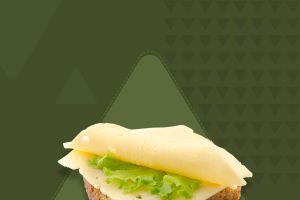Chia seeds are the edible seeds of Salvia hispanica, a flowering plant in the mint family (Lamiaceae) native to central and southern Mexico, or of the related Salvia columbariae of the southwestern United States and Mexico.
Chia seeds are oval and gray with black and white spots, having a diameter around 2 millimetres (0.08 in). The seeds are hygroscopic, absorbing up to 12 times their weight in liquid when soaked and developing a mucilaginous coating that gives chia-based foods and beverages a distinctive gel texture.
There is evidence that the crop was widely cultivated by the Aztecs in pre-Columbian times and was a staple food for Mesoamerican cultures. Chia seeds are cultivated on a small scale in their ancestral homeland of central Mexico and Guatemala and commercially throughout Central and South America.
Chia seeds may be added to other foods as a topping or put into smoothies, breakfast cereals, energy bars, granola bars, yogurt, tortillas, and bread.
They also may be made into a gelatin-like substance or consumed raw. The gel from ground seeds may be used in place of eggs in cakes while providing other nutrients, and is a common substitute in vegan and allergen-free baking.
Unlike flax seeds, whole chia seeds do not need to be ground because the seed coat is delicate and readily digested, possibly improving nutrient bioavailability.
Antioxidants found in chia seeds can help to fight free radicals in your body. Free radicals cause oxidative stress and cell damage. Eating foods rich in antioxidants may help to reduce your risk of developing many health issues associated with free radicals, including heart disease, cognitive decline, and certain types of cancer.
Chia seeds contain quercetin, an antioxidant that can reduce your risk of developing several health conditions, including heart disease. The seeds also high in fiber, which can help to lower high blood pressure and, in turn, reduce your risk of developing heart disease.
Chia seeds are high in fiber. Studies show that fiber may help to reduce insulin resistance and improve blood sugar levels, reducing your risk of metabolic syndrome and type 2 diabetes. Research has also found that bread containing chia seeds triggers a lower blood sugar response than traditional bread, which helps to prevent high blood sugar levels.
Chronic inflammation can lead to health conditions like heart disease and cancer. Caffeic acid, an antioxidant found in chia seeds, can help to fight inflammation in the body. Eating chia seeds regularly may also help to reduce inflammatory markers, which often indicate the presence of an inflammatory disease.
A 1-ounce serving of chia seeds has 39% of your recommended daily allowance of fiber. The soluble fiber in the seeds absorbs water, causing them to expand in your stomach and increase your feeling of fullness when you eat them. By letting you feel fuller despite eating less, chia seeds can help you maintain a healthy weight.
You may find chia pudding on the menu at organic cafes and health food stores, but it’s simple to make your own versions at home. Chia pudding is similar in consistency to tapioca. It’s simple enough to make for breakfast yet elegant enough to serve for dessert at your next dinner party.
All you need to make vanilla bean chia pudding is almond milk, chia seeds, and vanilla beans. Top this versatile dish with a dash of cinnamon, chocolate shavings, lemon zest, or a drizzle of maple syrup.
You may also layer the pudding with fresh fruit to create a tasty parfait. Cinnamon simmering apple is worth trying.


